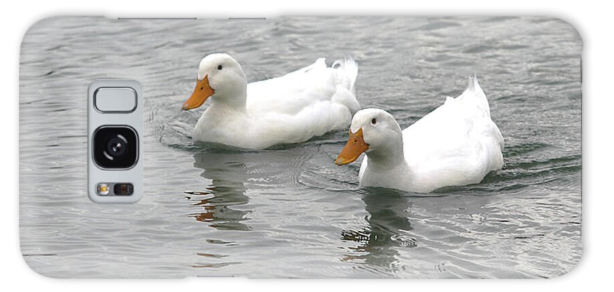
Camera shake happens when the camera moves while the shutter is open, resulting in blurry images. This common issue can ruin otherwise perfect shots, especially in low-light situations or when using a slower shutter speed.
Several factors can contribute to camera shake. One main cause is unsteady hands. Even slight movements can cause noticeable blurring, especially if you’re using a heavier camera or a lens with more zoom. Additionally, low shutter speeds increase the risk since the shutter stays open longer, capturing more of any movement.

Check out my collection of Galaxy cases. Choose from impact-resistant slim profile or hardshell cases. The image is directly printed onto the case and wrapped around the edges.
Camera weight and balance also play a significant role. Heavier cameras are more prone to shake, as they are harder to hold steady without support. Using a camera with poor weight distribution can exacerbate this problem. Another common culprit is improperly gripping the camera or standing in an unstable position.
Understanding these causes is crucial for taking sharp photos. By recognizing what leads to camera shake, you can take steps to mitigate it, ensuring every picture you take is clear and focused.
Using Proper Grip and Posture
Holding the camera correctly can significantly reduce camera shake. One effective way is to hold the camera with both hands. Use your right hand to grip the camera body and your left hand to support the lens. This provides a solid foundation, minimizing movement.
Maintaining a stable posture is equally important. Stand with your feet shoulder-width apart for better balance. Tucking your elbows into your sides also helps keep the camera steady. Avoid leaning or stretching too much, as this can throw off your balance.
Use The Hand Strap
Using the camera’s hand strap can offer added stability. Wrap it snugly around your wrist for extra support. This makes it easier to hold the camera firmly, reducing the likelihood of unintended movements.
Watch out for common mistakes that can lead to camera shake. For example, holding the camera with just one hand or extending your arms fully can make it hard to keep the camera steady. Also, avoid relying solely on the camera’s LCD screen to compose shots, as this often leads to less steady handling compared to using the viewfinder.
Utilizing Tripods and Monopods
Tripods and monopods are excellent tools for reducing camera shake. Using a tripod provides a stable base, ensuring your camera remains completely still during the shot. This makes tripods essential for low-light photography or long-exposure shots.
Choosing the right tripod or monopod depends on your specific needs. Lightweight and portable tripods are excellent for on-the-go photography, while heavier models offer greater stability for indoor or studio work. Monopods, on the other hand, are more portable and quicker to set up, making them ideal for shooting on the move or in confined spaces.
Setting Up The Tripod
Setting up a tripod is straightforward but requires attention to detail. Make sure all the legs are extended evenly and locked securely. Position the tripod on a flat, stable surface to avoid any unintended movement. To further enhance stability, hang a weight from the center column of the tripod if it has a hook.
If a tripod or monopod isn’t available, consider using other stable surfaces to rest your camera. Walls, tables or even your camera bag can serve as makeshift supports to minimize shake.
Leveraging Camera Settings to Reduce Shake
Adjusting your camera settings can significantly help in reducing shake. One of the most effective methods is increasing the shutter speed. A faster shutter speed means the camera sensor is exposed for a shorter duration, capturing less movement and resulting in sharper images.
Many modern cameras come with built-in image stabilization features. Turn these on to counteract minor movements. Refer to your camera’s manual to find and activate this setting. Lens-based stabilization is another feature found in some lenses, providing an additional layer of stability.
Adjust The ISO
Adjusting ISO and aperture settings can also contribute to reducing shake. A higher ISO setting allows for faster shutter speeds in low light but be mindful of increased noise in the image. A wider aperture lets in more light, enabling you to use a faster shutter speed while maintaining proper exposure.
Some cameras come equipped with in-camera anti-shake technologies, such as sensor-shift stabilization. These technologies physically move the sensor to counteract camera movement, providing an additional buffer against shake.
Post-Processing Techniques to Correct Camera Shake
While it’s best to avoid camera shake during shooting, sometimes a bit of post-processing can help salvage slightly blurred photos. Various software tools offer features to minimize the appearance of shake in your images.
Photo editing software like Adobe Photoshop, Lightroom, and GIMP are popular choices for this task. These programs come with built-in sharpening tools and filters specifically designed to correct minor shakes. They’re not a perfect fix but can improve the overall clarity of your photos.
Sometimes The Tools Are Straightforward
Using these tools is often straightforward. In Photoshop, for instance, the ‘Shake Reduction’ filter automatically analyzes the photo and makes necessary adjustments. Lightroom offers sharpening sliders that let you fine-tune the details manually. GIMP, the free alternative, also has tools and plugins that provide similar functionality.
It’s important to recognize the limitations of post-processing. Severe shake can’t be fully corrected this way. Minor blurs can often be improved, but they won’t be as sharp as images taken with proper techniques. Therefore, rely on post-processing as a backup plan rather than a primary solution.
Practical Exercises to Improve Stability
Improving your camera stability skills takes practice. Simple exercises can help develop the muscle memory needed to hold your camera steady. Start by practicing holding your camera correctly, as discussed earlier. Do this for a few minutes each day, focusing on keeping your hands and body still.
Breathing techniques can also play a significant role in reducing camera shake. Steady, controlled breathing helps maintain a calm, stable posture. Try exhaling slowly as you press the shutter button, which can help minimize movement.
Use Your Surroundings
Incorporate your surroundings into your practice. Use walls, tables, or even your camera bag to help stabilize your shots. Balancing the camera on stable surfaces helps you get a feel for how to reduce shake in different environments.
Final Thoughts
Set small, achievable goals for yourself. For example, aim to keep your camera steady for a certain number of seconds without any support. Track your progress over time to see improvements. Consistent practice will build your confidence and contribute to sharper, clearer photos.
Did you enjoy this post? Do you want to know when the next post comes out? Consider subscribing. I only send update emails once a week, usually on Friday. Try it out. You can unsubscribe at any time.

